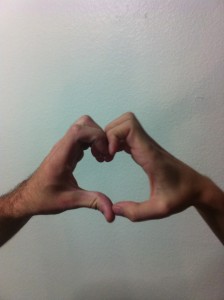Ben explained that “Kandi” is the name for a type of bracelet that consists of beads on a plastic string. Each bracelet is different, and youre supposed to make your own bracelet unique. People wear these bracelets to raves, which are huge dance parties where electronic musicians and DJs perform.
Ben said that there are Kandi and Name-Giving Ceremonies at raves. If youre an inexperienced raver, you likely dont have a Kandi bracelet or a rave name, which is basically just a nickname for your rave alter-ego, since people dress and behave differently at raves than they do in regular, every day life.
At raves, the more experienced rave-goers will bring Kandi bracelets that they can then pass on to other, beginner-level ravers. Furthermore, the experienced ravers make up a rave name during this process that sticks with that person forever. Ben said that one of the rules is that both people have to be rolling (slang for high on ecstasy or mdma), but people often break this tradition.
Ben said this tradition was taught to him at a rave in which the group Bloody Beetroots were performing. A random guy approached him and asked him, Do you have a rave name? Ben was confused, and responded that he didnt know what he was talking about. The random guy then said, You are Hurricane, because Ben was wearing blue, wavy face paint.
Ben said that he was completely out of his element at this point and didnt know what was going on, but the random guy continued with the process. He told Ben that he had something for him before taking Ben through the official Kandi giving ceremony.
The Kandi-giving ceremony calls for both individuals to raise one hand and make the peace sign (two fingers). The combine fingertips and say peace.” Example:
Then, the individuals combine their hands so that it looks like a heart symbol and say love. Example:
Finally, the individuals combine hands so that their palms are linked together like this:
They then say, unity. With the experienced individuals free hand, he takes his Kandi bracelet and slides it over the conjoined palms, on to the other persons wrist. After that, the process is over.
Ben told me that he still feels as if his rave name is Hurricane, at that hes now at the level where itd be acceptable to give a rave name to someone else.
Ben said he thinks this tradition exists because raves are all about love. He said that in a world full of hate, the youth of America need a place to feel safe and feel that connection with human beings on a positive level.
Bens analysis is probably true to a certain extent, as the interaction definitely symbolizes love and unity between otherwise random people. From a non-raver, outsider point of view, however, the ceremony seems more like a rite of passage for inexperienced ravers. If you havent gone through this process, you cant really consider yourself a part of the subculture, at least according to Bens report. After going through this process (which some rave attendees have never even heard of), you feel like part of a larger group of individuals. Then, once you feel experienced enough and fully integrated into the rave culture, you can pass the tradition on.



